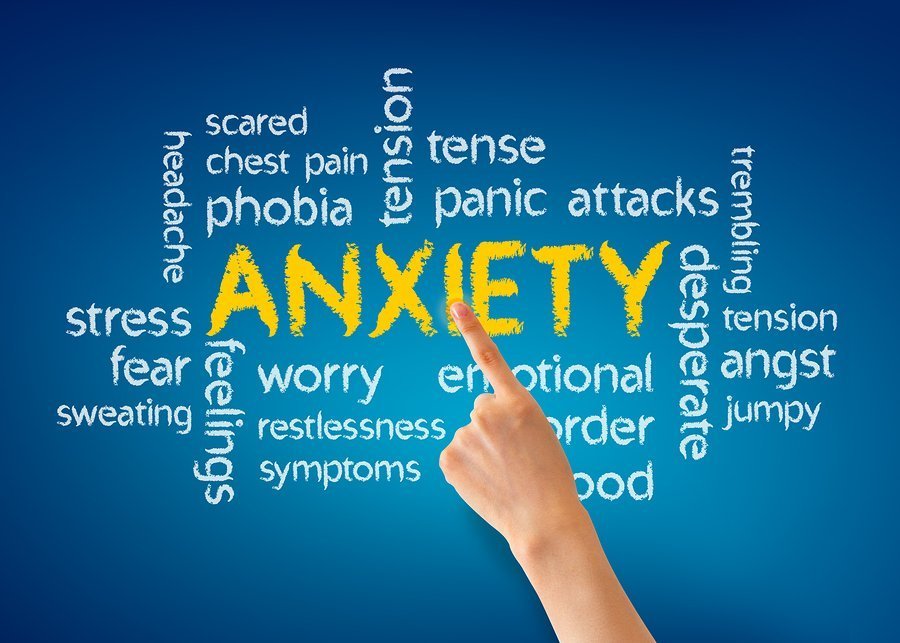Table of Contents
ToggleAre you feeling sleepy, grumpy, or just plain worn out? Fear not, for the power of napping is here to save the day! That’s right, napping isn’t just for lazy cats and retired grandpas anymore. It’s a scientifically proven way to boost your energy, productivity, and overall well-being. Whether you’re a busy professional, a student burning the midnight oil, or a stay-at-home parent chasing after little ones, napping is a valuable tool to have in your arsenal.
In this article, we’ll explore the art of napping and provide you with all the tips and tricks you need to take your daytime snooze game to the next level. From the best time to nap to the perfect nap length and everything in between, we’ve got you covered. So, grab your pillow, find a cozy spot, and let’s dive into the world of napping. But first, let’s take a moment to appreciate the importance of napping and the many benefits it can bring to your life.
Types of Naps
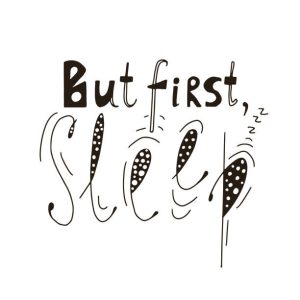
When it comes to napping, not all naps are created equal. Depending on your needs and preferences, different types of naps can have different effects on your energy levels, mood, and cognitive function. Here are three common types of naps and how they can benefit you:
Power Nap
As the name suggests, a power nap is a quick and efficient way to recharge your batteries and boost your productivity. Typically lasting between 10 and 20 minutes, a power nap can help you fight off drowsiness and regain your focus without interfering with your nighttime sleep. It’s especially useful if you’re feeling sluggish after lunch or need to stay alert during a long workday.
Recovery Nap
If you’re feeling exhausted or sleep-deprived, a recovery nap can help you catch up on the sleep you’ve missed and restore your energy levels. Usually lasting between 30 and 60 minutes, a recovery nap can help you enter the lighter stages of sleep, where your body can repair and rejuvenate itself. Just be careful not to oversleep, as waking up from a deep sleep can leave you feeling groggy and disoriented.
Full-Cycle Nap
For those who want to take their napping game to the next level, a full-cycle nap may be the way to go. A full-cycle nap is designed to take advantage of your body’s natural sleep cycles and can last anywhere from 90 minutes to two hours. During a full-cycle nap, you’ll go through all stages of sleep, including REM sleep, which can enhance your creativity, memory consolidation, and problem-solving skills. However, a full-cycle nap requires a significant time commitment and may not be practical for everyone.
The Best Time to Nap
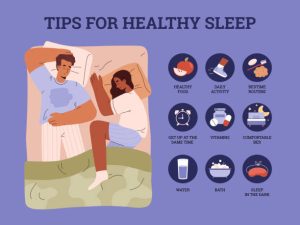
When it comes to napping, timing is everything. If you nap at the wrong time, you may end up feeling groggy, disoriented, and even more tired than before. But if you nap at the right time, you can wake up feeling refreshed, energized, and ready to tackle the rest of your day. So, what’s the best time to nap?
Mid-day Nap
For most people, the best time to take a nap is during the mid-day slump, which typically occurs between 1 pm and 3 pm. This is the time when your body temperature naturally drops, causing you to feel sleepy and sluggish. Taking a nap during this time can help you recharge your batteries and boost your productivity for the rest of the day.
A mid-day nap is also ideal because it doesn’t interfere with your nighttime sleep. As long as you keep your nap short (around 20-30 minutes), you should be able to fall asleep and wake up without any issues. Just make sure you nap in a quiet, dark, and cool environment to maximize the benefits of your snooze.
Afternoon Nap
If you’re unable to take a mid-day nap, an afternoon nap can also be beneficial. The best time for an afternoon nap is around 2-3 hours after lunch, which is when your body naturally experiences a drop in blood sugar and energy levels.
However, you should be mindful of the duration of your nap. If you nap too late in the afternoon or for too long, it may interfere with your nighttime sleep and leave you feeling groggy and unrefreshed. Stick to a short nap (20-30 minutes) and try to nap in a quiet, dark, and comfortable environment.
Factors that Affect the Quality of Nap

Noise Level
One of the most significant factors that can impact the quality of your nap is the noise level in your environment. Loud noises, such as traffic, construction, or even your neighbor’s dog barking, can disrupt your sleep and make it difficult to drift off. If you find yourself in a noisy environment, consider investing in a pair of noise-canceling headphones or earplugs to block out unwanted sounds.
Lighting
The amount of light in your nap environment can also affect the quality of your nap. Bright lights can make it harder to fall asleep, while too much darkness can leave you feeling disoriented when you wake up. Ideally, you want to find a spot that is dimly lit or has the option to adjust the lighting to your preference. Consider using a sleep mask to block out light if you are napping during the day.
Temperature
Temperature is another important factor in determining the quality of your nap. If the room is too hot or too cold, you may find it difficult to fall asleep or stay asleep. Experts recommend keeping the temperature between 60-67°F (15-19°C) for optimal sleep conditions. Experiment with the temperature until you find the ideal setting for your napping needs.
Comfort Level
The comfort level of your nap environment can also impact the quality of your nap. Make sure you have a comfortable surface to rest on, such as a bed, couch, or even a comfortable chair. Use pillows and blankets to adjust your comfort level to your liking. If you’re napping in a public place, consider bringing a travel pillow or blanket for added comfort.
Pre-nap Routine
Your pre-nap routine can also affect the quality of your nap. Engage in relaxing activities before napping, such as meditation or light stretching, to help calm your mind and body. Avoid caffeine, alcohol, or heavy meals before napping, as these can interfere with your ability to fall asleep. A consistent pre-nap routine can help signal to your body that it’s time to relax and prepare for sleep, leading to a more restful nap.
How Long Should a Nap Last?
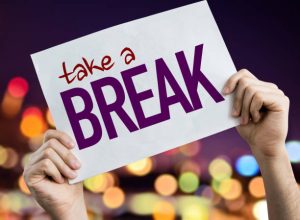
Napping can be a tricky business, especially when it comes to figuring out how long to nap for. Nap for too little, and you won’t feel rested. Nap for too long, and you’ll feel groggy and lethargic. So, what’s the sweet spot? Let’s explore the different nap lengths and their pros and cons.
10-20 Minutes
Also known as the power nap, this brief nap is perfect for a quick energy boost. Power naps can help increase alertness, improve cognitive function, and enhance motor skills. They are ideal for those who need a quick pick-me-up without interfering with their nighttime sleep. However, power naps don’t provide the restorative benefits of longer naps and may not be enough to combat severe sleep deprivation.
30-60 Minutes
This nap length is perfect for those who need a bit more restorative sleep but don’t want to risk feeling groggy. A 30-60 minute nap can help boost creativity, memory retention, and overall mood. It can also improve cardiovascular health and reduce stress levels. However, a longer nap can increase the risk of sleep inertia, which is the groggy feeling you get upon waking up. To avoid this, try to time your nap for the end of a sleep cycle, which is typically around 90 minutes.
Longer Naps
Naps lasting longer than 60 minutes can provide the most restorative benefits, including improved emotional regulation, reduced inflammation, and increased immune function. They are ideal for those who need to make up for lost nighttime sleep or for shift workers who need to adjust their sleep schedule. However, longer naps can also lead to sleep inertia, which can negatively affect your daytime productivity. It’s important to keep in mind that longer naps should not replace a good night’s sleep and should only be used as a supplement.
Tips for a Restful Nap

Taking a nap can be a refreshing way to recharge your batteries and increase your productivity, but not all naps are created equal. Here are some tips to help you get the most restful nap possible:
Find a comfortable spot
When it comes to napping, location is everything. You want to find a spot that is quiet, cool, and comfortable. Look for a place where you can lie down, such as a couch or a bed, and make sure that the lighting is dim or that you have an eye mask to block out any bright light. Consider investing in a comfortable pillow or blanket to help you relax even more.
Relaxation techniques
Before you settle in for your nap, take a few minutes to relax your mind and body. You can do some deep breathing exercises, progressive muscle relaxation, or visualization techniques to help calm your mind and release tension from your body. You can also try listening to calming music or nature sounds to help you drift off to sleep.
Power nap vs. full-cycle nap
Deciding on the length of your nap depends on your schedule and how much time you have available. A power nap typically lasts between 10-20 minutes and is a great way to give yourself a quick energy boost without feeling groggy afterward. If you have more time, a full-cycle nap lasts around 90 minutes and allows your body to go through a full sleep cycle, leaving you feeling more rested and refreshed.
How to Wake Up from a Nap

Alarm clock
Using an alarm clock is a popular way to wake up from a nap. It’s a reliable and convenient way to ensure you don’t oversleep and miss important appointments or commitments. However, be mindful of the type of alarm clock you choose. A jarring, loud alarm can leave you feeling groggy and disoriented, while a gentle, soothing alarm can ease you out of your nap and help you feel refreshed. Consider using a gradual alarm that slowly increases in volume or a vibration alarm that won’t disturb others around you.
Natural Wake-up
If you’re lucky enough to have the luxury of taking a nap when you have nowhere to be, allowing yourself to wake up naturally can be a wonderful experience. Your body will naturally come out of sleep when it’s ready, and you’ll avoid the abrupt jolt of an alarm clock. However, be sure to give yourself enough time to nap without worrying about oversleeping. And if you do find yourself oversleeping, don’t panic! Simply take note of how long you slept and adjust your nap schedule accordingly in the future.
Wake-up with sunlight
Another natural way to wake up from a nap is to use sunlight as your alarm clock. If you’re napping in a room with natural light, leaving the curtains or blinds slightly open can allow the sun to gradually filter in and wake you up gently. Alternatively, you can invest in a sunrise alarm clock that simulates the rising sun and gently wakes you up with natural light. This method can help regulate your body’s circadian rhythm and make waking up from your nap feel more natural and rejuvenating.
Nap Alternatives

If you’re not in a position to take a nap, there are several alternative techniques you can try to recharge your batteries and refresh your mind.
Meditation
Meditation is a popular and effective way to clear your mind and reduce stress levels. Sit comfortably, close your eyes, and focus on your breathing. With each inhales and exhale, allow your thoughts to drift away, clearing your mind of any distractions. Research shows that even just a few minutes of meditation can have a positive impact on your mental and physical health.
Relaxation Exercises
Relaxation exercises, such as progressive muscle relaxation, can help you release tension in your body and calm your mind. This technique involves tensing and then relaxing each muscle group, one at a time, from your toes to your head. As you release the tension in each muscle, you’ll feel a sense of deep relaxation and calm.
Yoga
Yoga is a practice that combines physical movement with breath control and meditation. It’s an excellent way to improve flexibility, strength, and balance while also reducing stress and anxiety. There are many types of yoga, so whether you prefer a gentle flow or a more rigorous practice, there’s a style that can work for you.
Benefits of Napping

Napping isn’t just a leisurely activity, it can actually provide numerous benefits for your health and well-being. Here are some of the top benefits of napping:
Increased Productivity
Do you ever find yourself hitting a wall in the middle of the day and struggling to stay focused on your work? Taking a nap can help reset your brain and improve your productivity. In fact, research has shown that a short nap can increase alertness and improve cognitive performance, allowing you to tackle your work with renewed energy and focus.
Improved Cognitive Function
Napping not only helps you feel more alert, but it can also boost your brain function. During sleep, your brain processes information and consolidates memories, which can improve your ability to learn and retain information. Napping has been shown to enhance creativity and problem-solving skills, making it a great tool for students and professionals alike.
Reduced Stress
In our fast-paced, high-stress world, taking time to relax and recharge is more important than ever. Napping can help reduce stress and promote feelings of relaxation and calmness. During sleep, your body produces less of the stress hormone cortisol and more of the feel-good hormone serotonin, which can help you feel more balanced and less anxious.
Downsides of Napping
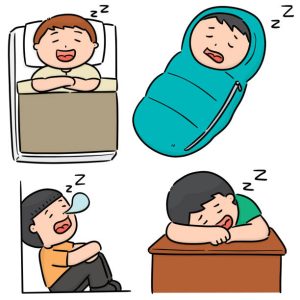
Sleep Inertia
One of the biggest downsides of napping is the potential for sleep inertia. This is that groggy feeling you get when you wake up from a nap that can take a while to shake off. The longer your nap, the more likely you are to experience sleep inertia. If you nap for more than 30 minutes, you may find that you feel even more tired when you wake up than you did before your nap. To minimize sleep inertia, try to keep your naps short, and avoid napping too late in the day.
Nighttime Sleep Disruptions
Another downside of napping is that it can disrupt your nighttime sleep. If you nap too late in the day, you may find that you have trouble falling asleep at night. This can lead to a vicious cycle of sleep deprivation and daytime napping, which can be difficult to break. If you suffer from insomnia, napping during the day can make it even harder to fall asleep at night. To avoid nighttime sleep disruptions, try to keep your naps short and limit them to earlier in the day. If you’re having trouble sleeping at night, consider cutting out naps altogether or talking to your doctor about other ways to improve your sleep.
When to Avoid Napping
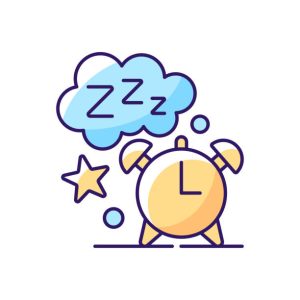
Napping is a great way to recharge your batteries, but there are times when it’s best to skip the snooze. Here are a few scenarios where you should avoid napping:
Late in the day
Napping too close to bedtime can disrupt your nighttime sleep and leave you feeling groggy and disoriented. If you find that napping later in the day makes it harder for you to fall asleep at night, try to nap earlier in the day or skip the nap altogether.
When you have trouble sleeping at night
If you already have trouble sleeping at night, napping during the day can make things worse. It can throw off your sleep-wake cycle and make it harder for you to fall asleep at night. Instead of napping, try to get more exercise, stick to a regular sleep schedule, and practice good sleep hygiene to improve your nighttime sleep.
When you have insomnia
If you suffer from insomnia, napping can be a double-edged sword. While it may help you feel more rested in the short term, it can also make your insomnia worse in the long run. Instead, focus on developing healthy sleep habits, such as creating a relaxing bedtime routine, avoiding caffeine and alcohol, and keeping your bedroom dark and quiet.
Precautions to Take Before Napping

Taking a nap is a great way to boost productivity and improve cognitive function. However, it’s important to take some precautions before you start your nap. Here are some essential precautions to consider before taking a nap.
Set an Alarm
It’s easy to lose track of time while napping, especially if you’re in a deep sleep. That’s why it’s important to set an alarm before taking a nap. This will ensure that you wake up on time and avoid oversleeping. A short nap of 10-20 minutes is ideal to help you recharge without interfering with your nighttime sleep schedule.
Avoid Caffeine Before Napping
Caffeine is a stimulant that can interfere with your ability to fall asleep, even during the daytime. That’s why it’s important to avoid caffeine before napping. Consuming caffeine before a nap can make it difficult to fall asleep and reduce the overall quality of your nap. Instead, try to drink water or other non-caffeinated drinks before your nap.
Stick to a Consistent Sleep Schedule
Having a consistent sleep schedule is important for overall sleep health, including napping. If you nap at different times each day, it can interfere with your nighttime sleep schedule and lead to sleep disturbances. That’s why it’s important to stick to a consistent sleep schedule, even for napping. Try to nap at the same time each day, ideally during the mid-afternoon period, for maximum benefits.
Best Foods to Eat Before a Nap

If you’re looking to optimize your napping experience, what you eat before your nap can have a big impact on the quality of your rest. Here are some of the best foods to eat before a nap.
High-Protein Snacks
Eating a snack that is high in protein before napping can help you feel fuller for longer and prevent hunger pangs from interrupting your rest. High-protein snacks like nuts, cheese, or a hard-boiled egg can be an excellent choice. Protein also helps to stabilize blood sugar levels, which can prevent sudden crashes in energy levels that may interfere with your nap.
Foods Rich in Magnesium
Magnesium is a mineral that can help to relax your muscles and promote a sense of calmness, making it an ideal nutrient to consume before a nap. Foods that are high in magnesium include leafy green vegetables, nuts and seeds, whole grains, and dark chocolate. A magnesium-rich snack like a handful of almonds or a spinach salad can be a great choice for a pre-nap meal.
Warm Milk or Herbal Tea
Warm milk or herbal tea are often recommended as bedtime beverages, but they can also be great choices before a nap. Milk contains tryptophan, an amino acid that helps to promote sleep, while the warmth of the milk can help to induce relaxation. Herbal teas like chamomile or valerian root can also have calming effects, which may help you to fall asleep faster and stay asleep longer.
How to Nap at Work: Sneaking in Some Zs During Office Hours

We’ve all been there. The afternoon slump hits, and all you can think about is catching some Zs. But when you’re at work, taking a nap might not be the most convenient or socially acceptable activity. Fear not, my fellow sleepyheads, because I’ve got some tips on how to nap at work without getting caught or ruining your professional image.
Find a Quiet Place
First things first, you need to find a place to nap that won’t attract attention. A conference room, unused office, or even your car can work. Just make sure you won’t be disturbed or accidentally locked in. And don’t forget to set an alarm.
Use a Sleeping Mask
Even if you find a secluded spot, there’s a good chance that there will be some light filtering in. That’s where a sleeping mask comes in handy. It not only blocks out light but also sends a clear signal to your co-workers that you’re not to be disturbed. Bonus points if it has a funny or witty design.
Plan Your Work Schedule Around Your Nap
If you want to nap at work regularly, try to work out a schedule that accommodates it. Maybe you can shift your lunch break or adjust your working hours. If you have a flexible work schedule, you’re in luck. But even if you don’t, you can still find ways to sneak in some rest without sacrificing productivity.
Remember, taking a nap at work can be a great way to recharge and increase your productivity, but it’s important to do it discreetly and responsibly. By finding a quiet place, using a sleeping mask, and planning your schedule accordingly, you’ll be able to enjoy a quick power nap without any negative consequences. So go ahead, close your eyes, and let your colleagues wonder if you’re a genius or just plain lazy.
How to Nap While Traveling

Traveling can be exhausting and disruptive to one’s sleep schedule, making it difficult to get the rest needed to make the most of the trip. Luckily, there are ways to nap while on the go that can help travelers feel refreshed and ready to take on the day.
Pack a Travel Pillow
One of the most important things to consider when napping while traveling is comfort. Packing a travel pillow can make all the difference in getting a restful nap, as it provides support for the head and neck. There are many types of travel pillows available, so finding one that suits individual needs and preferences is important.
Find a Quiet Spot
Finding a quiet spot to nap while traveling can be challenging, but it is crucial for getting quality rest. Seek out areas that are away from high-traffic areas, loud music or conversations, and bright lights. Noise-canceling headphones or earplugs can also help to block out unwanted noise.
Stick to a Consistent Sleep Schedule
Traveling can disrupt a person’s sleep schedule, causing them to feel drowsy during the day. To combat this, it is important to try to stick to a consistent sleep schedule, even while on the go. This means trying to wake up and go to bed at the same time every day, even if that means napping during the day to make up for lost sleep.
How to Nap with Kids: A Survival Guide

Napping with kids can feel like trying to sleep during a rock concert. But fear not, tired parents – with a little planning and patience, you can make nap time a reality. Here are some tips for successfully napping with your little ones:
Establish a Nap Routine
Consistency is key when it comes to nap time. Establish a routine that works for your family and stick to it as closely as possible. This might include reading a story, singing a lullaby, or cuddling with your child before laying them down. By following the same routine each day, your child will learn to associate these activities with sleep and be more likely to drift off.
Use White Noise or Calming Music
There’s a reason why adults love falling asleep to the sound of rain or waves crashing – it’s soothing and helps to drown out other noises. The same goes for kids. Consider investing in a white noise machine or playing calming music to create a peaceful sleep environment. Bonus points, if you find music that you enjoy too – nap time, can be a break for parents too!
Set a Consistent Nap Time
Just like with a nap routine, consistent nap time is essential for success. Try to schedule your child’s nap for the same time each day, if possible. This will help to regulate their internal clock and make it easier for them to fall asleep. Of course, life happens, and schedules can get disrupted. But if you can stick to a consistent nap time most days, your child will benefit from the routine.
How to Nap with Pets: A Guide to Snoozing with Your Furry Friends

When it comes to napping, there’s no denying that pets can be both a blessing and a curse. On one hand, snuggling up with a furry friend can be incredibly comforting and relaxing. On the other hand, pets can be noisy, restless, and downright disruptive when it comes to catching some z’s. But fear not, fellow pet owners – with a little planning and preparation, you can learn how to nap peacefully alongside your four-legged companion.
Find a Comfortable Spot for Both You and Your Pet
The first step to successful napping with pets is finding a comfortable spot for both you and your furry friend. Whether it’s a cozy corner of the couch or a designated nap area on the floor, make sure the space is large enough for both of you to stretch out and get comfortable. Avoid napping in areas that are too hot or too cold, as this can lead to discomfort for both you and your pet.
Train Your Pet to Sleep at Certain Times
If your pet is prone to disrupting your naps with their energy and enthusiasm, it may be time to start training them to sleep at certain times. This can involve setting a regular nap schedule for your pet and establishing a calming bedtime routine. You can also try using calming pheromone sprays or diffusers to help your pet relax and settle down.
Use a White Noise Machine to Block Out Noise
Finally, if you’re having trouble napping with a noisy pet, consider investing in a white noise machine. This can help block out distracting sounds and create a peaceful environment for both you and your furry friend. Alternatively, you can try playing calming music or ambient sounds to help lull your pet to sleep.





